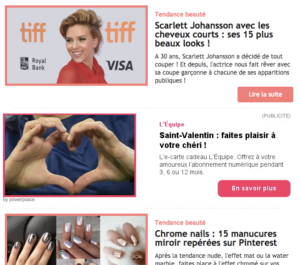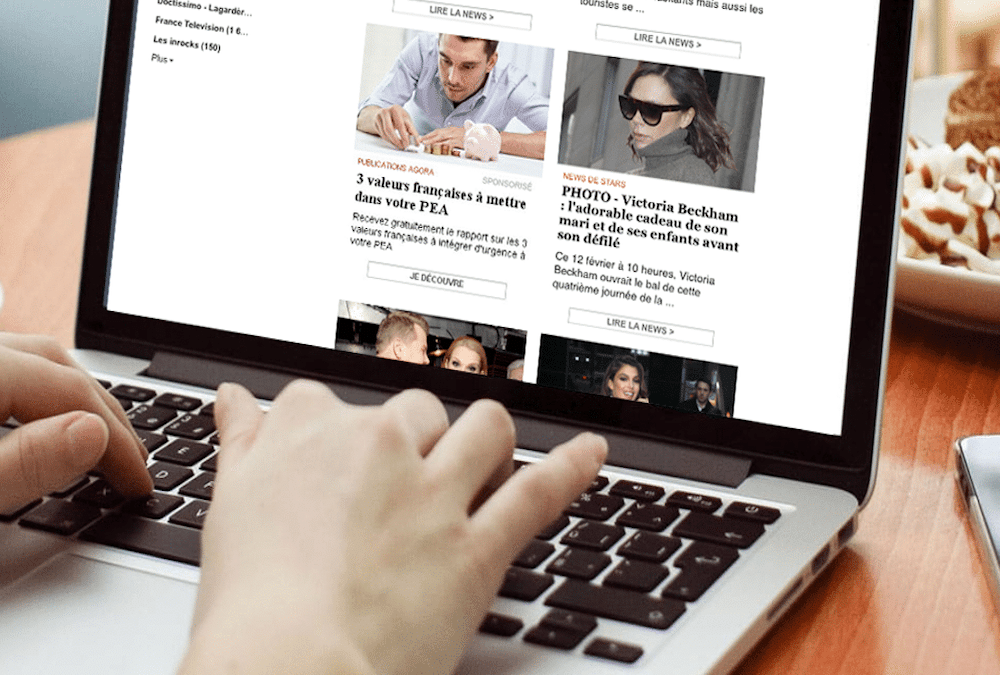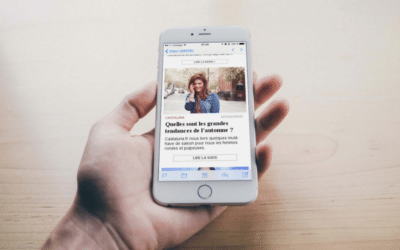Do you know what is better than online advertising ? Native advertising.
Native advertising is defined by the IAB (International Advertising Board) as a form of paid media where the ad experience follows the natural form and function of the user experience in which it is placed.
The IAB defined six native ad formats: in-feed, paid search, recommendation widgets, promoted listings, IAB standard with native elements and custom.
One of the most popular format is in-feed unit. You can see below an example of an in-feed native ad done by Powerspace.

Now that you know what is native advertising, let’s see how it can save the Internet!
Why should you care about advertising ?
First things first, before talking about native advertising, we need to talk about advertising in general.
One thing I love about the internet is that you can access quality content written by very talented people for free. Who doesn’t ?
Today, the only way to keep this content free is for publishers to include advertising to their websites in order to pay the writers. And, if you are (thinking about) using an adblocker, remember that you are keeping content producers away from the money they need to keep publishing quality content.
However, I think we can all agree that having an intrusive popup showing up while reading an article or try to focus on the content while having a creepy ad on the side is just a nightmare and should be forbidden.
This is where the native advertising takes on its full meaning.
Why native advertising is better than traditional online advertising ?
1. Native advertising is better for users
Native advertising is a non-intrusive form of advertising that does not affect the user experience by melting within the publisher’s content. This way, native ads do not interrupt users while browsing content on the publisher’s website.
Security issues are also a concern. Most risks come from two main sources: third-party JavaScript tags, and programmatic creatives redirects, on which publishers have no control. With the right ad tech, native advertising can solve these security issues by giving back to publishers full control on the ad management. Indeed, buyers (advertisers, agencies, trading desk, DSP) provide all the creative elements in a template defined by the publisher (custom or openRTB compliant).
2. Native advertising is better for brands
According to a IPG and Sharethrough survey, native ads are better for brands because users’ visual attention was clearly superior than for standard banner ads (+53%).
This study also showed that users exposed to native advertisements were experiencing more affinity with the brand displayed (+9%) and were also more interested in buying products from the brand (+18%).
With these numbers in mind and with the right content strategy, native advertising could become the first channel in terms of ROI and volume for brands.
3. Native advertising is better for publishers
Well, if you have read the two paragraphs above, my guess is you already know why native ads are better for publishers too.
Website visitors won’t be as annoyed by ads as with graphical placements so they won’t necessarily install an adblock software. If they are less annoyed by the ads, they might come back more often on the website, generating more impressions, and, in the end, more ad revenue for the publisher.
Since native ads generates better performance for brands, they will be more likely to pay higher CPMs for those ad units, generating more revenue for the publisher. Moreover, native advertising will become a must for publishers since investments in this kind of advertising will continue to grow to reach $36 billion in 2021, representing 74% of the total US display ad revenue.
Native advertising will strengthen the relationship between publishers and readers by improving their browsing experience and will drive more qualified traffic to brands’ landing pages. This will create a virtuous circle that will save the Internet.



